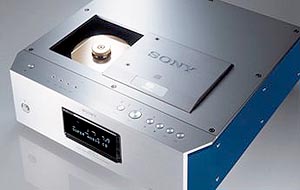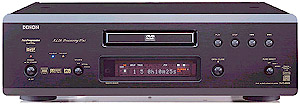 |
|
|
Sweating The Small Details
Those small details can go a long way towards establishing the high-end pedigree and performance parameters of a particular piece of gear; not to mention the price. Better components cost more money. You can choose to incorporate discrete output devices instead of ICs in your design, eschew the use of op-amps, employ more sophisticated internal wiring and heavy copper tracings - the sky's the limit. Of course, when cost is no object, what's the challenge in audio design? Hey, dude, how did that new $150,000 loudspeaker sound? Well, Jim, that motherfucker had better sound righteous. I mean, it is a hell of a lot more challenging to come up with a loudspeaker for $2000 or less that can keep music lovers grinning for the next decade.
So please, dear readers, let's not get ensnared in the ultimate audiophile bear trap: Do not confuse cost with quality. Sure, sometimes there is a direct correlation, but oftentimes there are far too many other factors that come into play to draw such an elitist conclusion. Or, to quote from the [c]HIPSTER[n]'s Ten Or So Basic Commandments of High End Audio: Almost no audio component has ever been designed that couldn't be tweaked into something better.
No, make that much better.
|
|
 |
|
Part of this is simply a reflection of progress; of cause and effect, trial and error, of soliciting feedback from dealers and customers - the natural evolution of our ears. Sometimes better components come along. Often, as we have suggested, sweating the small details can reap enormous sonic benefits. I can think of a number of loudspeakers I've really admired over the years, such as the Vandersteen 5 and the Joseph Audio RM33si Signature, where over the natural course of time, strategic tweaks in power supplies [on the Vandys' active woofer circuit], transducers, internal components and crossover points took already excellent products and made them so much better that it forced me to reevaluate my original enthusiasm for the product. That's how much better the Vandersteen 5A and the Joseph Audio RM33si Signature Limited Edition are over their antecedents.
But you know what? The original products ain't exactly chopped liver. It's all relative, as in out of sight, out of mind. People happy with the original versions and their current system synergy are likely still very happy with the originals and content to leave well enough alone. Of course, then there are those devoted music lovers and chronically obsessive audiophile types in search of some ineluctable perfection who just have to have the latest version and are more than willing to shoulder the parts, labor and shipping costs of pursuing the upgrade path. Mazel tov. I guess I must confess that all things being equal, if I had the bread (which I don't), I'd probably fall in with the latter camp.
So there you have it - better sound as a natural by-product of the creative process. Which is why any number of successful loudspeaker designs have endured for years and years in a succession of strategic upgrades which pre-suppose that while the principles of the original design were sound, that with strategic tweaks and upgrades, even a proven product can be made that much better.
Okay, so we can make an excellent product even better. But what about making an above-average product into something really special or a good product great?
|
|
|
 |
|
Often, products are designed with a specific market and specified price point in mind. It's not so much that the product is flawed as it is compromised in some manner. And by characterizing something as compromised, one should not conclude that the people who designed it are less than capable. What's more likely is that they had to proceed based upon certain marketing and production parameters such as: Who is going to buy this; how much are they willing to pay for it; what kind of system are they going to be using it in; where can we afford to build the most value in; where do we have to hold down costs to bring it in at marketable price point; and do we have a product at another price point we can step people up to if they can actually see and hear a difference and are willing to pay for it?
As such, an entire cottage industry has arisen around popular audio components that having garnered a significant following, can then be modified to achieve an even more rarefied level of performance for that small but significant niche of consumers who can hear the difference and are willing to pay for it - all in the name of getting more bang for the buck and optimizing the value of a component so that it might offer performance levels commensurate with far more expensive options.
|
|
|
That's the goal, in any event. I reviewed the Sony SCD-777ES SACD player a few years back for Stereophile and was privileged to use it as an absolute system reference for a couple of years. That model, and its fully-balanced big brother the Sony SCD-1, were built like the proverbial brick house, their transports constructed along the lines of a missile silo. If you take a quick dip into any search engine on the Internet, you will find a veritable plethora of options for strategic upgrades, the goal being to optimize the performance of basic units which are often pretty damn good to begin with. Like I stated at the outset: Almost no audio component has ever been designed that couldn't be tweaked into something better. However, you can't make a silk purse out of a sow's ear nor can you (should you) polish a turd.
|
|
 |
|
Proceeding from these basic principles is what makes many of the products on Walter Liederman's Underwood HiFi web site so intriguing. Besides operating on the web, Liederman also works one-to-one by appointment with consumers in the Atlanta/Georgia market. In this brave new world of consumer audio, some product lines are only available locally while those consumers who live well outside of major markets (where they might readily enjoy access to the wares of franchised dealers who service a particular geographical territory) may avail themselves of a selection of HighEnd products Liederman has cherry-picked from the leading audio lines and which, in his estimation, represent a particularly attractive balance of price/performance value.
More to the point, Liederman -- in partnership with audio designer Chris Johnson of the Parts Connexion -- now offers a series of exclusive upgrade packages for Denon, Jolida, Music Hall, Outlaw, Quad and Shanling products under the banner of Underwood Mods. (Underwood has also entered into an arrangement with Dan Wright of ModWright, a Godfather Of Tweak, whose popular Sony SCD-1 and SCD-777ES Absolute Truth modifications include sexy new options such as a tubed-analog output stage and an external power supply.)
Which brings us to the Underwood/Parts Connexion Level-1 mod of the Denon DVD-2900 multi-disc player. In an e-mail I received from Liederman, he outlined a series of tweaks for this $999 list universal machine that purportedly elevate this unit to no-compromise audiophile standards [check his website for details about what the mod entails]. I must briefly reference one of Walter's fundamental claims: "The modified DVD-2900 easily outperforms the stock Denon DVD-9000 as an audio player for far less money."
|
|
|
Fair enough. The DVD-9000 is the flagship of the Denon line. At its higher price point, it presumably reflects a greater dedication to audio verities. However, let me spell out this caveat and make it as plain as day: Neither as an audio enthusiast nor professional audio critic do I have any way of verifying or quantifying that claim. At no point in this process did I have or seek access to either an unmodified DVD-2900 or a stock DVD-9000 to reference the Underwood mod against.
|
|
|
|
 |
|
I cannot comment one way or another as to the veracity of that claim. It is a qualitative and subjective pronouncement I will not be commenting on. If any of you have before or after stories to share with 6moons as to DVD-2900 upgrades -- or any other interesting modifications of any other gear by any other source -- feel free to share them. But you will not be hearing such stories or absolute pronouncements from me.
Have we made ourselves clear? My goals going into this evaluation were to relate my musical impressions of the aural attributes of a multi-disc player selling for $1799, referenced against some comparably priced digital front end gear in my own reference system. I can give you a hint as to the outcome - this review has a happy ending. After living with this unit for several months, I can say that I was most favorably impressed with its musical value - but we're getting ahead of ourself.
|
|
|
|
|
 |
 |
|
 |
|
|
|
|
|
|
|
|
|
|
|







